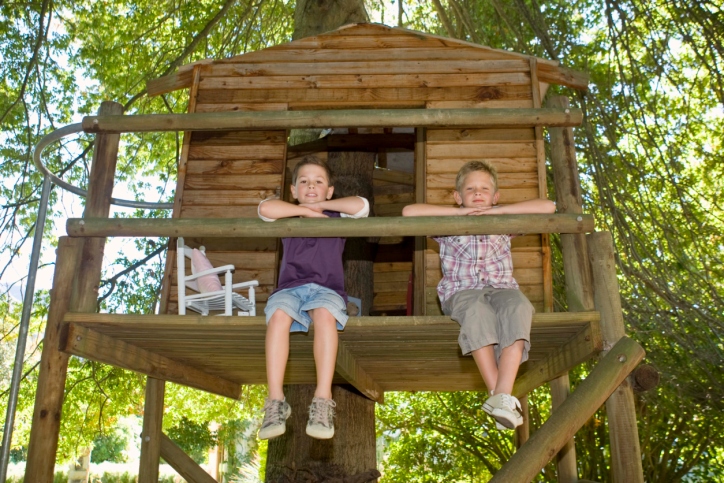Looking for a Fun DIY Project This Spring? How to Plant Your Own Vegetable Garden
 When spring arrives, many people want to spend more time outdoors enjoying the fresh air and warmer temperatures. While you could lounge in a chair with a good book, you may find it more enjoyable to plant your own vegetable garden. This is an on-going project that will require you to spend time outdoors regularly, and it can be quite enjoyable to watch the fruits of your labor spring to life. More than that, you may love to sample and even share the tasty treats that you have grown on your own. If you are ready to get started planning and planting your vegetable garden, follow these preliminary steps.
When spring arrives, many people want to spend more time outdoors enjoying the fresh air and warmer temperatures. While you could lounge in a chair with a good book, you may find it more enjoyable to plant your own vegetable garden. This is an on-going project that will require you to spend time outdoors regularly, and it can be quite enjoyable to watch the fruits of your labor spring to life. More than that, you may love to sample and even share the tasty treats that you have grown on your own. If you are ready to get started planning and planting your vegetable garden, follow these preliminary steps.
Choose the Plants That You Want to Grow
As a first step, think about the types of plants that you want to grow in your garden. These should ideally produce vegetables that you and your family will enjoy eating. They also ideally will be suitable for growing in your climate and with the type of soil that is present on your property. Additionally, enough space should be available to accommodate the full grown size of the plants. This up-front effort is critical for the next few steps in the planning and preparation process.
Select a Suitable Space in Your Yard
Each plant species will have special growing requirements. Some plants may prefer to be in full sunlight, and others may prefer partial sunlight or mostly shaded areas. Some may prefer soil that is mostly dry or that is regularly moist and wet. Different areas of your yard may be more accommodating for some plant species than others. For example, plants that prefer more moist soil may thrive in a lower area of your yard that receives more runoff when it rains and that takes longer to dry out after a shower.
Choose the Best Time to Plant
A final point to consider is the best time to plant your crops. Some will thrive when cooler temps in early spring are still common, but others may not tolerate a freeze at all. These may need to be planted after the risk for a late spring freeze is gone. Think about how long it takes plants to grow and what the temperatures in your area may be when the plants are fully grown and ready to produce vegetables for you.
You may be able to complete much of this preliminary planning and research during the last few weeks of winter from the comfort of your own home. Keep in mind that you can get outdoors and begin to prepare your garden area before you are ready to plant your crops. These steps will pave the way for a truly enjoyable do-it-yourself project this spring.

 It can be frustrating to deal with dead zones with your wireless and cellular coverage while you are out and about. However, overcoming dead zones in public areas may be as simple as relocating to a different area in a building or walking to a new location. Dead zones may also be present in residential homes and apartment buildings. If you have a dead zone in your home, this issue can easily cause you considerable frustration on a daily basis, and you may be wondering what steps you can take to overcome the problem.
It can be frustrating to deal with dead zones with your wireless and cellular coverage while you are out and about. However, overcoming dead zones in public areas may be as simple as relocating to a different area in a building or walking to a new location. Dead zones may also be present in residential homes and apartment buildings. If you have a dead zone in your home, this issue can easily cause you considerable frustration on a daily basis, and you may be wondering what steps you can take to overcome the problem. If you have children, no home is complete without a treehouse. Besides the fact that treehouses provide kids with hours of entertainment, they can also confer ancillary benefits that are hard to quantify. For starters, treehouses can improve property values by boosting curb appeal. When building any type of treehouse, keep the following tips in mind.
If you have children, no home is complete without a treehouse. Besides the fact that treehouses provide kids with hours of entertainment, they can also confer ancillary benefits that are hard to quantify. For starters, treehouses can improve property values by boosting curb appeal. When building any type of treehouse, keep the following tips in mind.